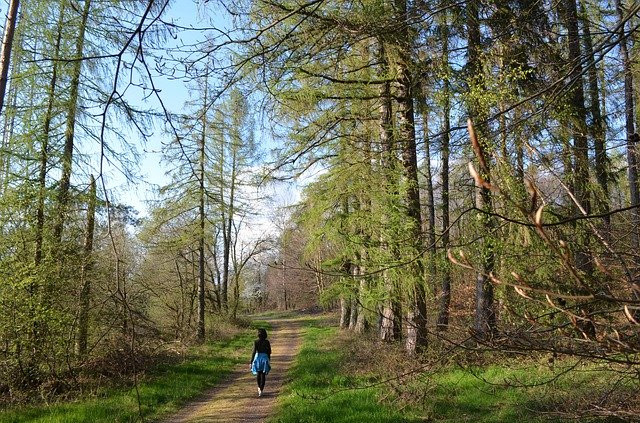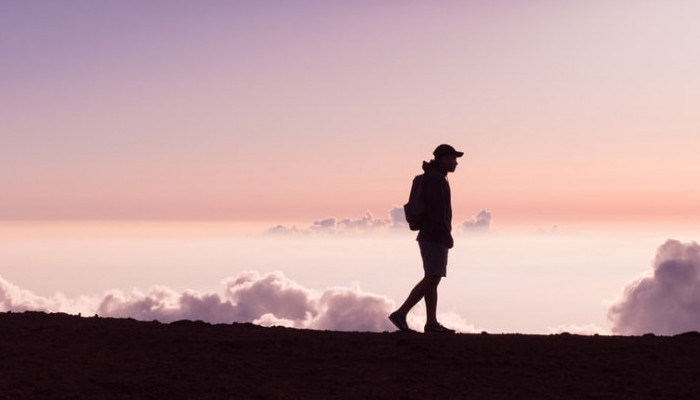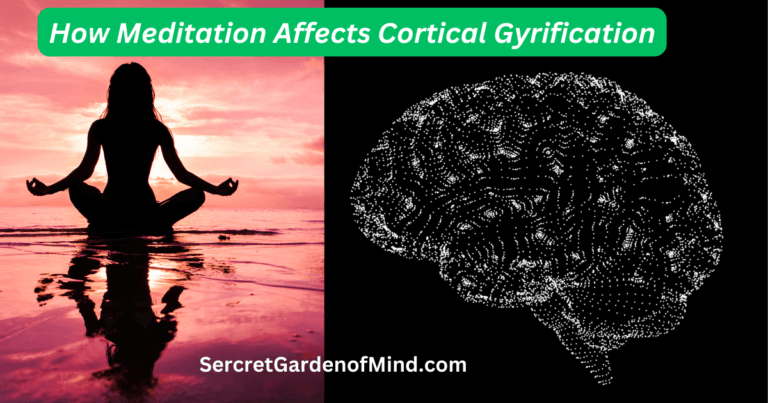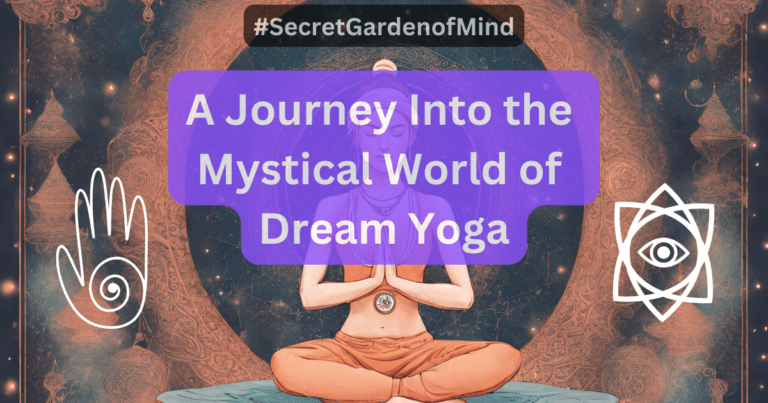Taoist Walking Meditation – How it Works
Hello everyone, Not been publishing as frequently on here lately. Sorry if you’ve missed me. Today’s post will be about Taoist Walking Meditation. Mindfulness Walking Meditation, and Guided Walking Meditation
A quite bizarre concept I fully agree. How on earth can you go for a walk, close your eyes and meditate at the same time?
This isn’t a type of meditation I know a lot about, if i’m being honest with you. I know about it sure but as past experience goes when I’ve tried to walk with my eyes closed it hasn’t really worked.
I’ve given this a go a couple times down nature trails etc. but most the times I have ended up walking into hedges. That is how much I knew until recently before doing the research for this article.
Taoist Walking Meditation – How it Works?

Table of Contents
Introduction to Taoist Walking Meditation
To begin with I think maybe I knew less about Walking Meditation than I thought before writing this. Walking meditation does not require you to keep your eyes closed! Unlike most forms of meditation this is one where you actually keep your eyes open.
It is more of a mindfulness exercise really. During Mindfulness Meditation the usual procedure is to sit in a comfortable posture with your eyes closed taking extra notice of your breathing, your movement, and the sensations of your body.
Walking meditation is essentially the same except that you are walking around instead of sitting and your eyes are kept open instead of being closed. Basically what you will be doing whilst walking is much the same. You will be walking at a slower more relaxed pace taking extra notice of your footsteps, movement, and breathing.
Also you will be paying extra special attention to your surroundings like the wind, and weather. The things you can hear in the distance, and the moment in time that you are in. I had a go at this a few days ago and what I found was that it made me take more notice of things that never really caught my attention before.
It is amazing how much I could see which I never really see before. This was just one time as well. Imagine how more heightened your experience would become if you did this regularly?
Guide to Walking Meditation
Like any place where you choose to mediate the environment and your surroundings are very important. Same as you likely wouldn’t choose to meditate in a noisy room full of people, when you are taking a walk for this reason you will want there to be the least amount of distractions.
The perfect kind of place I would say would be a nature trail. Through a field or woodlands. Maybe a beach or by the riverside. Anywhere basically that you would associate with being peaceful where you can feel relaxed.
Before setting off on your journey make sure you don’t have any bags to carry or anything that involves extra effort to walk with. Meditation requires your sole focus. Listening to music, or walking a dog will not help you. You need the least things to distract you as possible.
Make sure as well that you plan ahead. Things like the route you are taking, and the weather. See to it that it isn’t hammering it down with rain or extra windy. That it’s not going up a hill where it would be tiresome to walk instead of somewhere like an easy wide country foot path.
You want the least distractions possible, and somewhere that you can practice this to it’s full potential.
Taoist Walking Meditation Benefits
Remember to ignore your normal thoughts and thinking. About what your going to eat when you get home, or what house work you need to do. These things must not interfere with your meditation. Your only focus should be the ‘here and now’.
The benefits of walking Meditation are that you will become more in tune with your surroundings. This you will not only find is extremely relaxing but also very intuitive. Things you wouldn’t have noticed otherwise will suddenly become more apparent. Maybe this could be wildlife, or plants, sign posts and other very minor details that would usually escape you.
From doing this kind of exercise regularly things this can improve are your focus, awareness, and intuition. Very much like other mindfulness exercises. Though of course there is another very beneficial aspect of this exercise – just the walking!
Just walking is great exercise. Think of your life energy as being similar to water stagnation which occurs when water stops flowing. Going out for a walk opposed to sitting around doing nothing all day is a very healthy thing to do.
Types of Walking Meditation
https://liveanddare.com/walking-meditation/
Theravada Buddhist Walking Meditation
In Thailand especially Buddahist Monks will practice this type of technique for prolonged periods of time. Sometimes as much as 10-15 hours a day. It can either be done with shoes or bare feet, and it involves walking back and forth along a single path.
The key here is to walk upright with your eyes cast down. Pay attention to your movements and foot steps. If you feel an overwhelming sensation of tranquility you can either stop or sit down to meditate further. When you come to the end of the track to turn around stop to focus on your breathing for a minute before continuing your exercise.
Kinhin Japanese Zen Walking Meditation
This involves walking clockwise around a room. Usually done in between sessions of regular seated meditation, and whilst holding a very specific posture. The idea here is to distribute your weight evenly and feel your feet as they touch the ground.
You will also carry out a practice called Shashu where you curl thumb into your left or right hand with your fingers wrapped around, and place above your belly button with your other hand placed over the top. This is maybe one of the slower types of walking meditation. With each step take a breath in and out.
The main focus of this meditation is breathing and the movement of your footsteps.
Thich Nhat Hanh Walking Meditation
Named after a Vietnamese Monk Thich Nhat Hanh this is a practice where during different moments of the meditation they are significant. For instance breathing in means “I have arrived”, and breathing out means “I am home”. Others also include; “in the here (breathing in)”, “in the now (breathing out”, and “I am solid (breathing in)”, “I am free (breathing out)”.
Thich Nhat Hanh makes special use of positive affirmations and if you mantras as each phrase is repeated again and again.
Taoist Walking Meditation Exercises
This is the kind of walking Meditation I named this post after. I didn’t know too much about the other practices when I began writing this so my apologies if you have felt this is misleading. This I will explore a little bit further here though talking a little bit about the different types of exercises.
Before I do about Taoist Walking meditations this is a Chinese based group of exercises
Exercise 1: Ball of Energy
- Breath in for every 3, 6 or 12 steps
- Breath out for every 3,6, or 12 steps
- Do this until you have picked up a rhyhm and begin walking.
- Visualise you Ki (Qi) energy breathing in and out as a ball of energy.
Exercise 2: Pulled by the Dantien
Walk in a fashion as you are being pulled by an unseen force. Focus your attention on the Dantien (Energy Centre) and let it bring you forward effortlessly.
Lead with your head, chest or pelvis habitually for a both energizing, and grounding exercise.
Exercise 3: Aimless Wandering Spirit
This is basically carelessly walking around. Effortlessly walking without thinking or doing anything else. Choose a path where you won’t have to pay much attention to your surroundings. Somewhere you are familiar with or where you can familiarise with. Cycle between meditative states as you walk in and out.
The trick is to move without concious effort aimlessly.
Final Thoughts
A lot different than other types of meditation but still with the same goal. To relax your mind, increase your awareness and intuition. Improve cognitive function and memory. Plus also relieve stress and anxiety.
This type of Meditation is good I think because walking is good. Especially walking in nice scenic peaceful places outdoors. Definitely think this is a good exercise for anybody to try out. Several examples I have shared above.
Personally I love going for walks so I will be trying this out myself more in future, as lucky for me I leave near quite a lot of countryside. Plus as it’s just coming up to Summer in the UK can’t think of a better time to enjoy the fresh air and wildlife.
Your Feedback
If you have found this article helpful and you would like to leave feedback, or comments, or if you have any questions please respond in the comments box below. I will look to respond within 24 hours.
Also if you you could please like and share this would be greatly appreciated.
Will look forward to your future visits;
Kind regards
Alex
Related Links:
Remote Viewing Techniques
Opening the Third Eye – Secrets of the Human Mind
Different Types of Meditation
Lucid Dreams and Meditation
tagcloud




